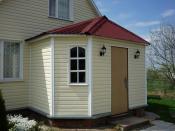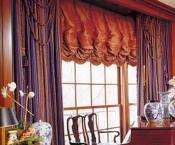Search
Login
Recommended
Stapler, the use of a stapler, types of staplers, how to choose a stapler
Everyone knows such an easy-to-use and very convenient tool as a stapler. And, most often, speaking of a stapler, for most people it’s a clerical stapler that can be used to fasten-sew-pin together, thereby systematizing papers on the desktop. But it turns out that the stapler can be actively used not only in the office, but also in construction, furniture production, and the laying of electrical communications. And it is about the types of staplers, their purpose and use, as well as the choice of high-quality and performing a specific task, we will tell in our article.
Content
- Construction stapler: application
- Construction stapler: types video
- Construction stapler: how to choose the right video
Construction stapler: application
The construction stapler, furniture stapler, tecker, stapler, as soon as this construction tool is not called and all the names will be true, because if we generalize, the stapler in construction and repair is a universal thing, the main task of which is to hammer brackets and nails of various sizes and purposes.
Construction stapler it is, in practice, an advanced hammer, and like a hammer, it is a rather indispensable and convenient tool.
It is used to fasten, nail, and fasten different materials, both hard (fiberboard, plywood, wood, plastic, thin metal plates), and soft (fabric, leather, film, insulation, roofing material, etc.) materials.
Why can you use a stapler in the construction and repair of apartments, houses (cottages) and furniture, specifically?
In construction:
- the construction stapler is used for fixing both inside and outside the roofing material on the roof, installing heat and water insulation, vapor barrier of both the roof and walls, floor, floorings and attic / attic.

- for carrying out caulking of joints in wooden log houses with special materials: insulation tape for joints is fastened with the help of staples of a building stapler.

- for the construction and installation of suspended plastic ceilings, walls on a wooden frame,

- for quick and convenient installation of wooden lining, boards, decorative panels on a wooden frame on walls and ceilings on porches, balconies and other rooms of the house,

- for fast, convenient and safe laying of cables of various thicknesses and various purposes in the house and apartment.

In the furniture industry:
- for repair and manufacturing of furniture: both for the manufacture and assembly of the frame itself, and for upholstery with fabric, leather,

- for decor,

- for the manufacture of houses for pets, scratching posts.
In the suburban area:
- for the manufacture of greenhouses and greenhouses in the country: on a wooden frame, using a special tape and a stapler, it is very easy, fast, firm and accurate to fix the film for more than one season.

- garden furniture

and wooden flower pots.

Construction stapler: types
The stapler tool, although universal, is many-sided: it is performed by manufacturers of building tools in various variations and modifications. Let us consider in more detail the existing types of construction staplers with their pros and cons in use.
Types of building streamers:
According to the type of professional use, they distinguish:
- household: mechanical stapler or cheap low-power models of electric stapler,
- professional: most models are electric and battery, as well as pneumatic staplers, characterized by high performance and power.
By the type of energy use for their work, all construction staplers can be divided into
- Mechanical (spring / manual)

The mechanical stapler is very easy to use, affordable, compact, mobile, easy and safe to use in the form of a construction stapler. The simpler the structure of the tool, and the mechanical stapler consists of a body, a lever and a spring, the less it is susceptible to breakage, which means that its reliability can be added to the advantages of a mechanical stapler.
Explicit the disadvantage is its low power (the strength of the fasteners suffers from this, the use of materials in the case of a mechanical stapler is limited, more often it is fabrics, cardboard, thin plywood), in comparison with other models of building staplers, and also, the need to apply your own (mechanical) efforts, and for this you yourself need to be a strong enough person or work with one hand, for sure, it will not work.
- Electric
Electric stapler version of a professional tool powered by a network.

Pros of this type of stapler – high power and performanceAt the same time, it is possible to adjust the impact power.
The disadvantages include:
- its cost, like any professional building tool, it, by definition, cannot be cheap.
- its size and weight, because, the more powerful the tool, the bigger and heavier it is. And this, in turn, can become an obstacle when working in hard to reach places.
- probability of overheating: any powerful tool cannot be used for a long time, because, when overheating occurs, as a result of which, at first, productivity decreases, and after that the tool can even burn out.
- the presence of an electric cord, can also interfere with the maneuverability of using a stapler. In addition, the cord can be bent, wringing, requiring additional attention and the time it takes to fix it.
Rechargeable, rechargeable stapler Another variant of the electric stapler. The cordless stapler is a manoeuvrable, powerful, portable tool.

But, its disadvantages are:
- dimensions and weight: a stapler whose dimensions depend on the capacity and size of the battery cannot be powerful and lightweight at the same time.
- the possible use of cheap or long-charging batteries: which significantly limits productivity.
- cost: the better, more powerful the stapler, the greater the capacity of its battery, the more expensive it is.
- Pneumatic:

powerful, productive, easy-to-use staplers. But, like all other types of stapler, the pneumatic stapler there are minuses:
- most often, a pneumatic stapler is a stationary toolbecause it is bulky and heavy due to the compressor and hose.
- its value is also decent.
By the type of consumables used, all staplers can be divided into:
- brackets,

- nailers
- universal: using not only different sizes of types of staples for a stapler, but also small nails, studs.

Construction stapler: how to choose the right
Having become acquainted with such a variety of types of building staplers, the question arises: how to choose it correctly so that you won’t regret about wasting your money?
First, you need to decide what you need the stapler for:
- if for a house or a summer residence, as an additional construction tool that makes life easier and saves time, then take a manual stapler for sure you will not regret the money spent on it.
- if you are an amateur or even a professional in the manufacture and repair of furniture, constantly perform insulation and decoration work on houses and apartments, then, naturally, you need a more expensive professional tool: a cordless one if you often work outdoors, an electric one that works from the mains if You carry out repair work in the room, or a pneumatic stapler, if you have a small workshop.
Now consider the types of consumables:
- by the size of the bracket, its shape, the possibility of using other options: nails and hairpins:
the wider the range of staples used, their types, shapes, the better the stapler for home, the more often it can be used in everyday life. So, again, you will get a working, useful tool, and not a fashionable trinket.
- by the cost of consumables and their availability (available in stores): choose the model of stapler that uses commonly available consumables for work: hairpins, staples, at an affordable or affordable price.
And it’s better if it is in a convenient plastic tool box






